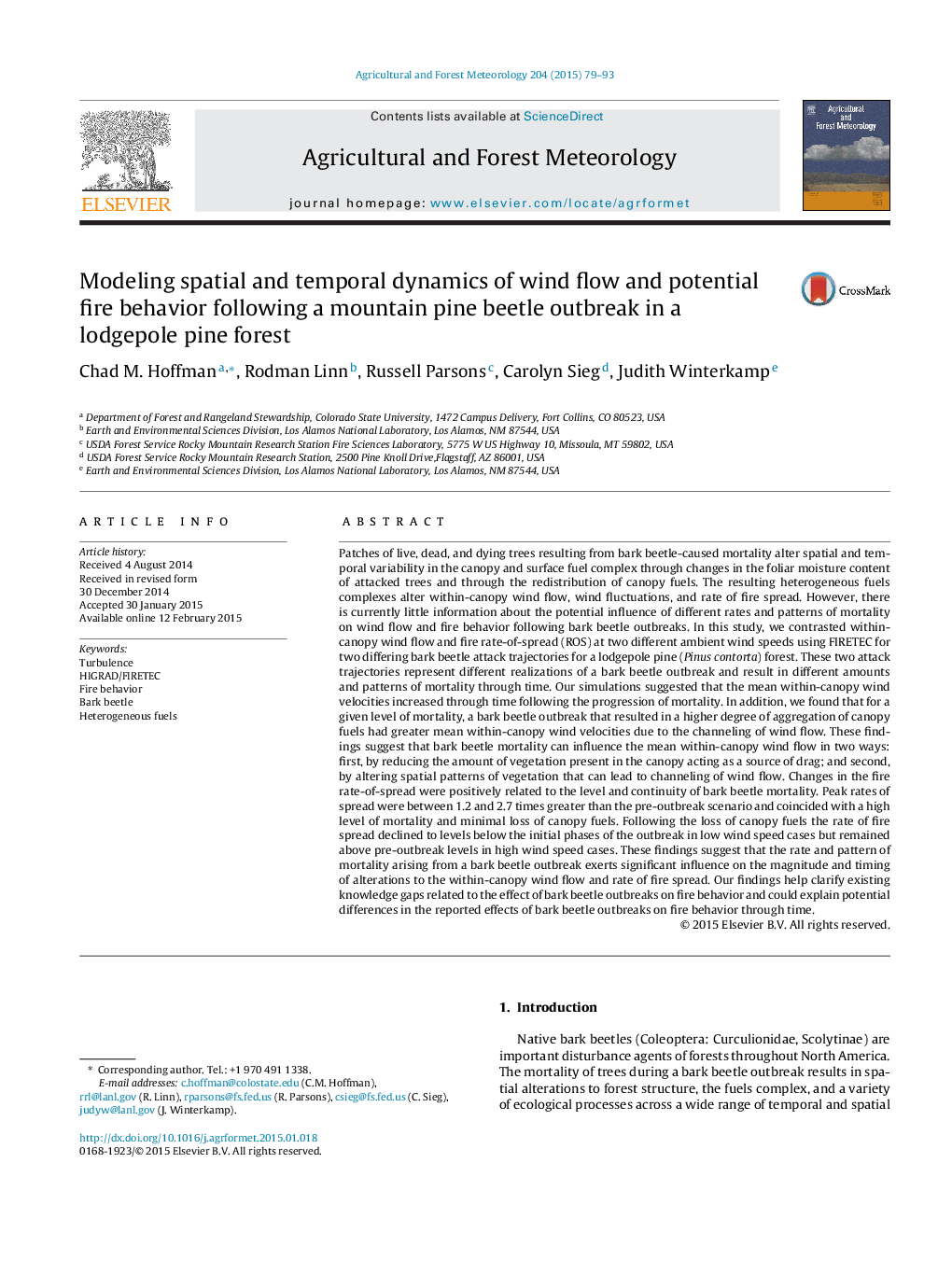| کد مقاله | کد نشریه | سال انتشار | مقاله انگلیسی | نسخه تمام متن |
|---|---|---|---|---|
| 81538 | 158321 | 2015 | 15 صفحه PDF | دانلود رایگان |
• Rate, pattern, and severity of mortality influenced wind flow and fire rate-of-spread.
• Greater wind velocities were associated with highly aggregated tree mortality.
• Fire rate-of-spread increased up to 2.7 fold immediately following the outbreak.
• Fire rate-of-spread was not inevitably reduced following bark beetle mortality.
Patches of live, dead, and dying trees resulting from bark beetle-caused mortality alter spatial and temporal variability in the canopy and surface fuel complex through changes in the foliar moisture content of attacked trees and through the redistribution of canopy fuels. The resulting heterogeneous fuels complexes alter within-canopy wind flow, wind fluctuations, and rate of fire spread. However, there is currently little information about the potential influence of different rates and patterns of mortality on wind flow and fire behavior following bark beetle outbreaks. In this study, we contrasted within-canopy wind flow and fire rate-of-spread (ROS) at two different ambient wind speeds using FIRETEC for two differing bark beetle attack trajectories for a lodgepole pine (Pinus contorta) forest. These two attack trajectories represent different realizations of a bark beetle outbreak and result in different amounts and patterns of mortality through time. Our simulations suggested that the mean within-canopy wind velocities increased through time following the progression of mortality. In addition, we found that for a given level of mortality, a bark beetle outbreak that resulted in a higher degree of aggregation of canopy fuels had greater mean within-canopy wind velocities due to the channeling of wind flow. These findings suggest that bark beetle mortality can influence the mean within-canopy wind flow in two ways: first, by reducing the amount of vegetation present in the canopy acting as a source of drag; and second, by altering spatial patterns of vegetation that can lead to channeling of wind flow. Changes in the fire rate-of-spread were positively related to the level and continuity of bark beetle mortality. Peak rates of spread were between 1.2 and 2.7 times greater than the pre-outbreak scenario and coincided with a high level of mortality and minimal loss of canopy fuels. Following the loss of canopy fuels the rate of fire spread declined to levels below the initial phases of the outbreak in low wind speed cases but remained above pre-outbreak levels in high wind speed cases. These findings suggest that the rate and pattern of mortality arising from a bark beetle outbreak exerts significant influence on the magnitude and timing of alterations to the within-canopy wind flow and rate of fire spread. Our findings help clarify existing knowledge gaps related to the effect of bark beetle outbreaks on fire behavior and could explain potential differences in the reported effects of bark beetle outbreaks on fire behavior through time.
Journal: Agricultural and Forest Meteorology - Volume 204, 15 May 2015, Pages 79–93
